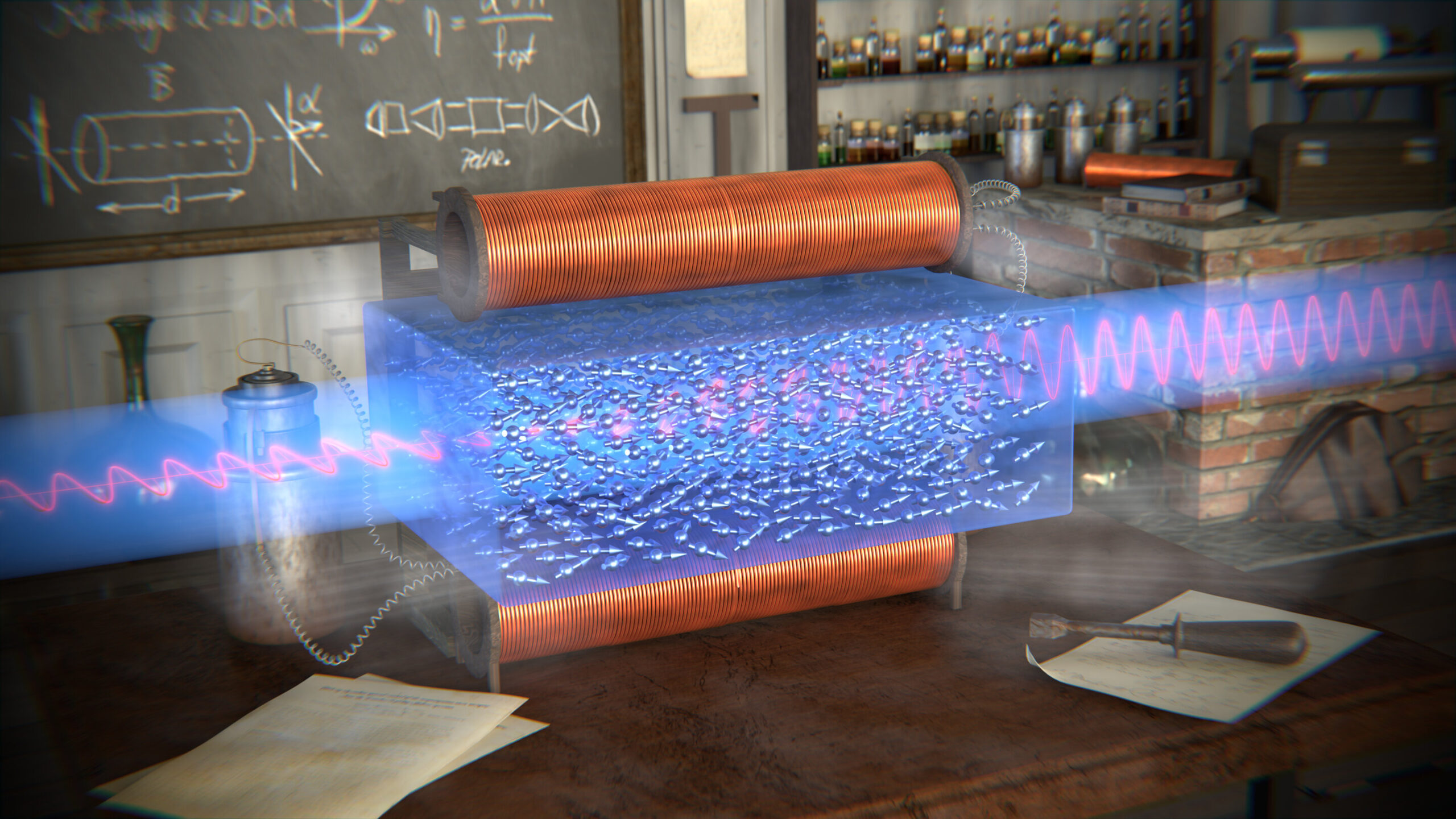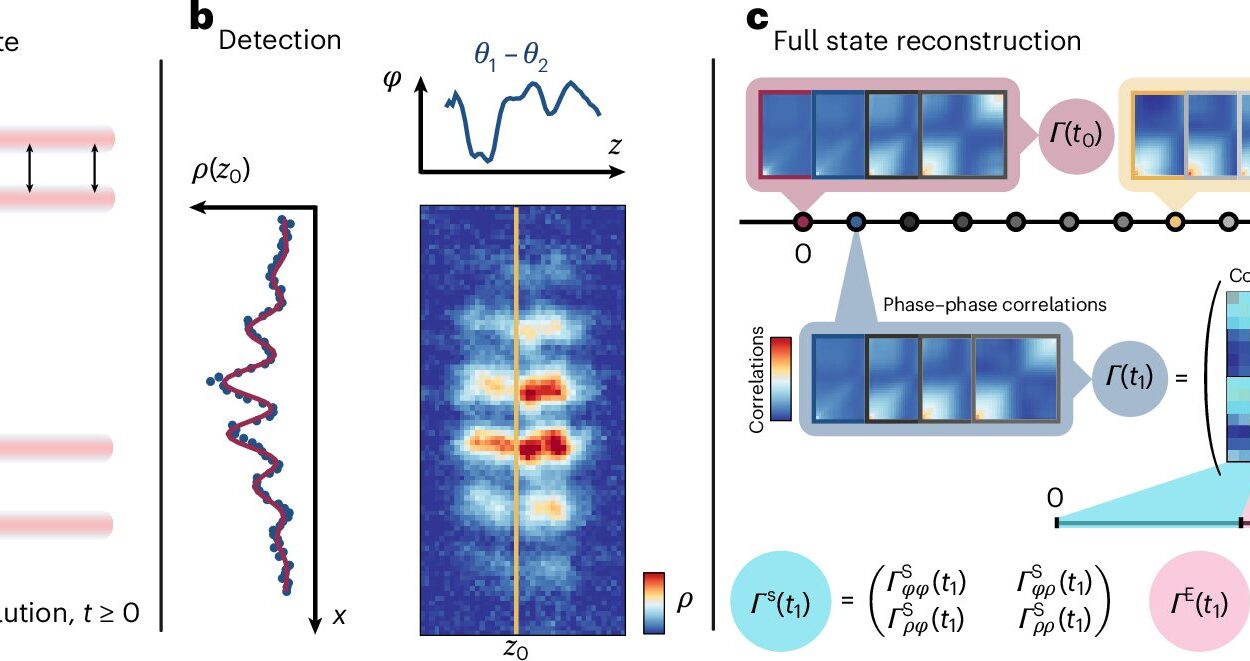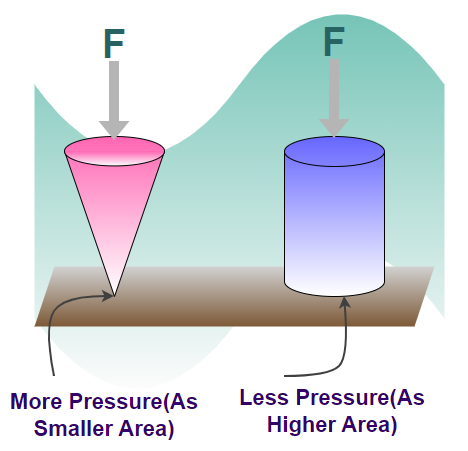Imagine for a moment that light—something we often think of as a simple tool for illumination—was more than just a source of brightness. What if it could manipulate the world around us in ways we never imagined, influencing even the magnetic properties of materials? This isn’t science fiction; it’s the revelation uncovered by researchers at the Hebrew University of Jerusalem, and it has the potential to rewrite fundamental principles in physics that have stood for over a century and a half.
The breakthrough centers on the Faraday effect, a phenomenon first discovered by the brilliant British scientist Michael Faraday in 1845. It’s an effect that occurs when light passes through a material in the presence of a magnetic field—causing the polarization of the light to twist. For the past 180 years, the effect has been thought to stem solely from the electric field of light interacting with the electric charges within matter. However, recent findings suggest that we’ve been overlooking a crucial player in this dance of forces: the magnetic component of light itself.
Dr. Amir Capua and Benjamin Assouline, who led the study, have presented the first theoretical evidence that light’s magnetic field does, in fact, contribute directly to the Faraday effect. This discovery challenges decades of established science and opens the door to entirely new ways of thinking about light, magnetism, and their interplay with matter.
A Twist in the Tale of Light
To understand just how revolutionary this finding is, it helps to imagine the long-standing narrative of the Faraday effect. For nearly two centuries, scientists have believed that the phenomenon was driven by the electric field of light, interacting with the electric charges in the material. The magnetic field of light was largely considered irrelevant. But Capua and Assouline’s work changes everything.
“In simple terms, it’s an interaction between light and magnetism,” explains Dr. Capua. “The static magnetic field ‘twists’ the light, and the light, in turn, reveals the magnetic properties of the material. What we’ve found is that the magnetic part of light has a first-order effect, it’s surprisingly active in this process.”
What Capua and Assouline have shown is that light doesn’t just interact with matter via its electric field. Its magnetic field is just as significant. By using advanced calculations based on the Landau–Lifshitz–Gilbert (LLG) equation—a well-established framework used to describe the motion of spins in magnetic systems—the researchers were able to prove that light’s magnetic field generates a torque inside the material. This is no longer a subtle interaction; it’s an active participant in the Faraday effect, almost like a second player in an orchestra where only one instrument was thought to be making the music.
“Light doesn’t just illuminate matter, it magnetically influences it,” Capua adds, underlining the weight of this discovery. It’s a claim that challenges our most fundamental understanding of how light behaves when interacting with the world.
Seeing the Impact: How Much Does the Magnetic Field of Light Matter?
The next question, of course, is how significant this magnetic contribution really is. Does it change everything, or is it just a tiny detail? To answer that, the team applied their new theoretical model to a material known as Terbium Gallium Garnet (TGG), a crystal that has been widely used to measure the Faraday effect due to its magnetic properties.
Their results were nothing short of eye-opening. The magnetic field of light accounts for around 17% of the rotation observed at visible wavelengths—this is already a striking number. But what’s even more surprising is that in the infrared range, the magnetic field of light could be responsible for up to 70% of the rotation. This is a major shift in our understanding, particularly in optical applications, where the role of light’s magnetic field has always been underappreciated.
“Our results show that light ‘talks’ to matter not only through its electric field, but also through its magnetic field, a component that has been largely overlooked until now,” Assouline explains.
This discovery shines a new light (no pun intended) on a phenomenon that has been taken for granted for nearly two centuries. It brings the magnetic field of light out of the shadows and into the spotlight, suggesting that there’s much more to learn about how light interacts with the materials around us.
A New Dawn for Optics and Quantum Technologies
What does this all mean for the future of technology and research? The implications of this study are profound, particularly in the fields of optics, magnetism, and quantum technologies. The insight that light can influence matter not just through its electric field but also via its magnetic field opens up a host of possibilities for innovative applications. Spintronics, which harnesses the intrinsic spin of particles for information processing, could be one of the first to benefit from these findings.
By using light to control magnetism at the microscopic level, this discovery could also lead to advancements in optical data storage, making the process faster and more efficient. Even more exciting is the potential for breakthroughs in quantum computing. Spin-based quantum computing technologies, which use the spin of particles to perform computations, could benefit from light’s new role as a magnetic influencer.
Beyond these specific applications, the discovery invites us to rethink our approach to optics and light manipulation. It offers a new perspective on how light can be harnessed for more powerful technologies, where the magnetic component of light is no longer an afterthought but a key player in the design and functionality of future devices.
Why This Matters
This research matters because it represents a fundamental shift in how we view the basic properties of light and its interaction with matter. For 180 years, the Faraday effect was seen as a one-dimensional interaction, with light’s electric field taking the lead. Now, thanks to Capua and Assouline’s work, we know that light’s magnetic field plays a crucial, measurable role.
As our understanding of light expands, so too do our technological possibilities. This discovery could lead to faster, more efficient ways to process and store data, enhance quantum technologies, and revolutionize fields like spintronics. It’s a reminder that even the most well-established scientific principles can hold secrets that remain hidden, waiting to be uncovered by a new generation of researchers.
In the end, this breakthrough challenges not just the physics of light, but the very way we think about the forces that govern the universe. The magnetic component of light may not be the only force in town, but it is certainly a force to be reckoned with. And this is just the beginning.
More information: Faraday Effects Emerging from the Optical Magnetic Field, Scientific Reports (2025). DOI: 10.1038/s41598-025-24492-9






